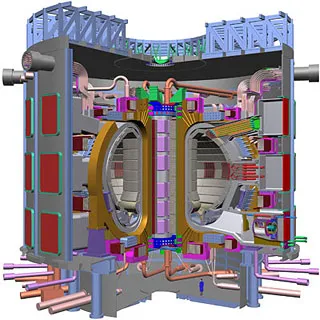Fusion plasma theory and modelling
The Plasma Theory and Modelling group focuses on understanding these fundamental properties of plasmas through a variety of different academic perspectives.
About
Big machines, hot plasma, and cool technology

- Plasma physics lies at the centre of many exciting technologies that are undergoing rapid development in the scientific and engineering communities. In particular, the drive behind magnetically-confined nuclear fusion is gaining significant momentum with the recently emerging desires of governments and national populations to get away from fossil-fuel based power. Construction has recently started in France on the first fusion reactor--dubbed ITER--that will consistently produce more energy than it consumes. The technical and scientific challenges inherent to the construction of ITER are some of the greatest that the scientific and engineering communities have ever had to face.
The Plasma Theory and Modelling group focuses on understanding these fundamental properties of plasmas through a variety of different academic perspectives. With a particular focus on magnetically-confined plasma physics, the group has an eclectic range of expertise including modelling and computer simulation of plasma turbulence and equilibria, fluid dynamics, mathematical theory of dynamical systems, plasma diagnostic design and using advanced statistical techniques in analysing experimental data. The group also actively fosters international collaboration in plasma research and is currently engaged in research with scientists in the UK, Germany and the United States.
Beyond nuclear fusion, the Plasma Theory and Modelling group has members whose interests also include the dynamics, modelling and computer simulation associated with weather, fluid flow and space plasma phenomena, to name just a few.
If you have any interest in plasma theory or modelling please feel free to contact any of the researchers in the group; we would be very happy to talk with you!
Presentations
An overview of the research activity within the group is available in the following seminars.
- Document
- Document
- Document
- Document

